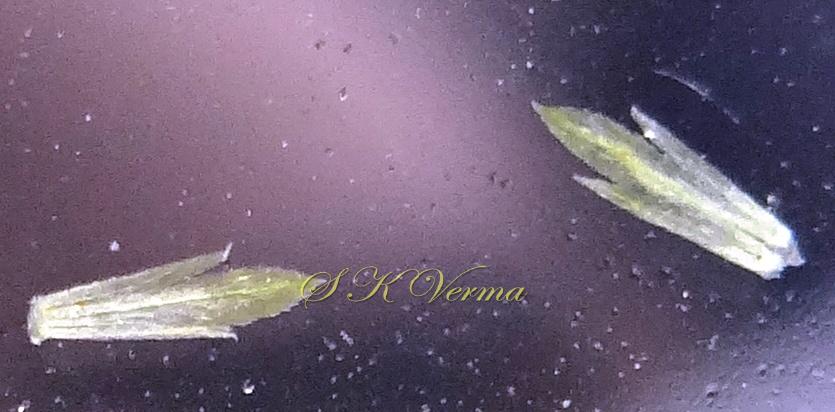GALINSOGA
Galinsoga
Ruiz & Pav., Fl. Peruv. Prodr. 110. 1794; Fl. China @ eFloras.org 20- 21: 864; Canne-Hilliker, Fl. North Amer. @ eFloras.org vol. 21.
Annuals up to 60 cm long. Stems erect. Leaves cauline, opposite, petiolate; blade lanceolate to broadly ovate, surfaces glabrate to densely pilose, 3-veined, margin entire to serrate. Capitula radiate or discoid, in +/- cymiform arrays. Involucres hemispheric to campanulate, 2.5-6 mm in diameter. Phyllaries persistent or deciduous, 6-9(-16), in 2 (or 3) series, elliptic, ovate-lanceolate, oblong or ovate, outer shorter, herbaceous or scarious, margin entire or minutely laciniate. Receptacle conical, paleate; paleae persistent or deciduous, scarious; proximal broadly elliptic to obovate, often connate at bases or nearly to apices, united in groups of 2 or 3 to adjacent proximal phyllary, each complex often enclosing and shed with a ray achene; distal persistent or deciduous, lanceolate to obovate, entire or 2-3 lobed, convex to conduplicate. Ray florets: (0) (3-) 5 (-8) (-15), female, fertile. Corolla white or dull-white to pinkish or purplish; tube pilose; limb quadrate-obovate to oblong, lobes 0-3. Disc florets: 5-50(-150), bisexual, fertile. Corolla yellow, tubes shorter than cylindric throats, pilose, 5-lobed, deltate. Anthers yellow. Style branch apices acute. Cypselae obconical to obpyramidal, glabrous or strigose; ray cypselae often shed with subtending phyllaries plus 2 or 3 adjacent paleae; pappus absent or of (1-) 14-20 white or grey, persistent, fimbriate, sometimes aristate scales.
12 species
Galinsoga parviflora
Galinsoga parviflora
Cav., Icon. Pl. 3: 41. t. 281. 1795; Hook. f., Fl. Brit. Ind. 3: 331. 1882; Collett, Fl. Siml. ed. 2: 264. 1921 (Reprint 1980); Sharma & Kachroo, Fl. Jammu (Illustr.) 2: t. 135. 1983; Dhaliwal & Sharma, Fl. Kullu Dist. 373. 1999; Kaur & Sharma, Fl. Sirmaur 380. 2004; Singh & Sharma, Fl. Chamba Dist. 410. 2006; Fl. China @ eFloras.org 20-21: 864,865; Fl. North Amer. @ eFloras.org 21: 181.
Annual herb, erect or decumbent-ascending, 15-60 cm long, stem ribbed, pubescent. Leaves cauline, opposite, sessile or shortly petiolate, petiole up to 4 mm long; leaf blade 3-4 cm x 1.5-1.7 cm, 3-nerved, ovate to ovate-lanceolate, cuneate at base, acute or acuminate at apex, margin ciliate, abaxial surface pubescent, especially on veins, adaxial surface sparsely pubescent. Capitula radiate, 4.5-6 mm across, terminal and axillary, on 1-2 cm long, pubescent peduncles, combined into a terminal corymbiform panicle. Involucres campanulate, ca. 5 mm in diameter. Phyllaries persistent, 2-seriate, inner phyllaries 5, 3-4 mm x 2 mm, ovate, obtuse or subacute, pubescent, 5-veined. Receptacle conical, paleate. Paleae persistent or deciduous, scarious, 2-3 mm x 0.7-1 mm, oblong-spathulate or nearly lanceolate, 3-lobed (outer paleae sometimes with one lobe), lateral lobes acute, smaller than central one; outer/proximal paleae persistent with inner/distal phyllaries or deciduous, elliptic to obovate; inner/ distal usually persistent, lanceolate to ovate or obovate. Outer/ proximal paleae often connate at bases or nearly to apices, united in groups of 2 or 3 to adjacent proximal phyllaries, each complex often enclosing and shed with a ray achene as a unit. Ray florets: Usually 5, female, fertile. Corolla white or dull white; tube small, ca. 1 mm long, pilose; limb ca. 2 mm x 1 mm, quadrate-obovate to oblong, lobes 2-3. Ovary ca. 2 mm long. Disc florets: Many, 15-50, 2.8-3 mm long, yellow. Corolla 1.7-2 mm long, funnelform, lobes 5, 0.25 mm long, deltate, finely pubescent outside. Anthers 0.5 mm long. Style 1 mm long, branched. Cypselae obconic to obpyramidal, 1.3-2.5 mm long, black, strigose/ hairy. Ray cypselae 1.5-2.5 mm; pappus absent or of 5-10 laciniate scales, 0.5-1 mm. Disc cypselae 1.3-2.5 mm, glabrous or strigose; pappus absent or of 15-20 grey, sometimes whitish, linear, fimbriate, obtuse or acute scales 0.5-2 mm.
Common Names: Quick Weed, Gallant Soldier, Potato Weed, Small Flower Galinsoga
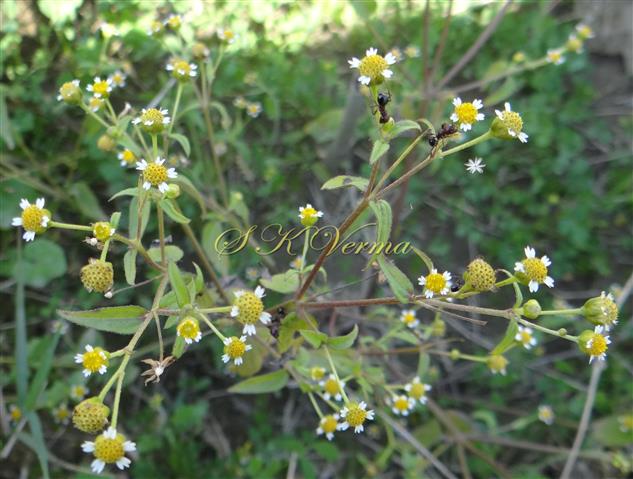
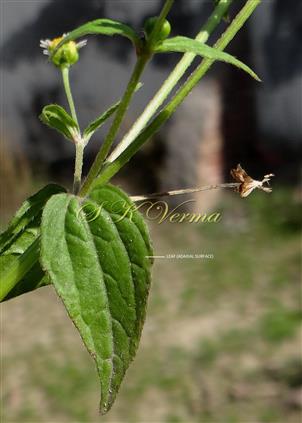
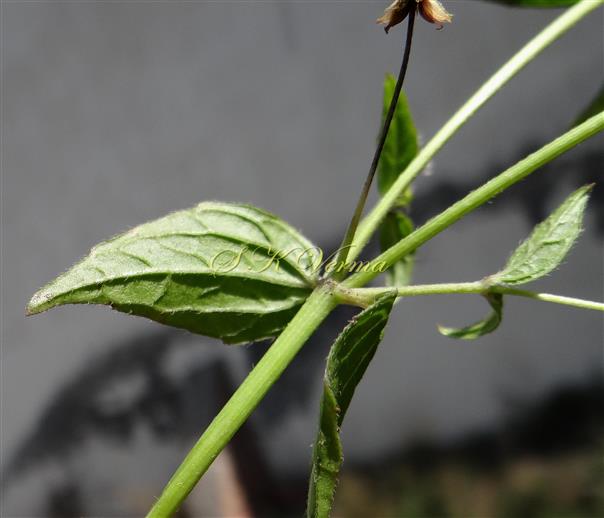
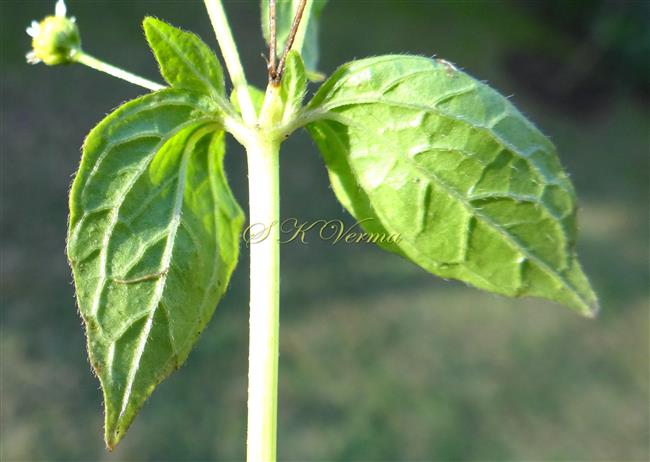
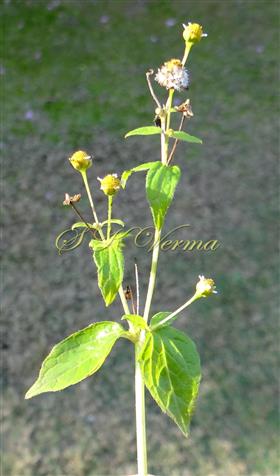
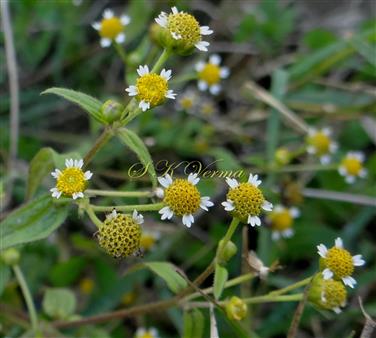
.jpg)

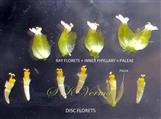
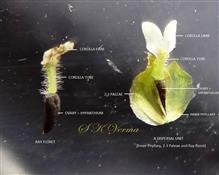
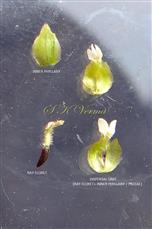
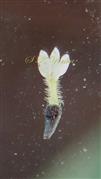
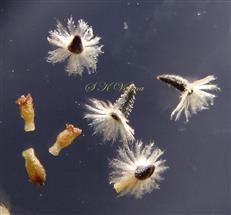
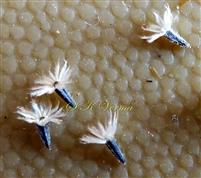







.jpg)
